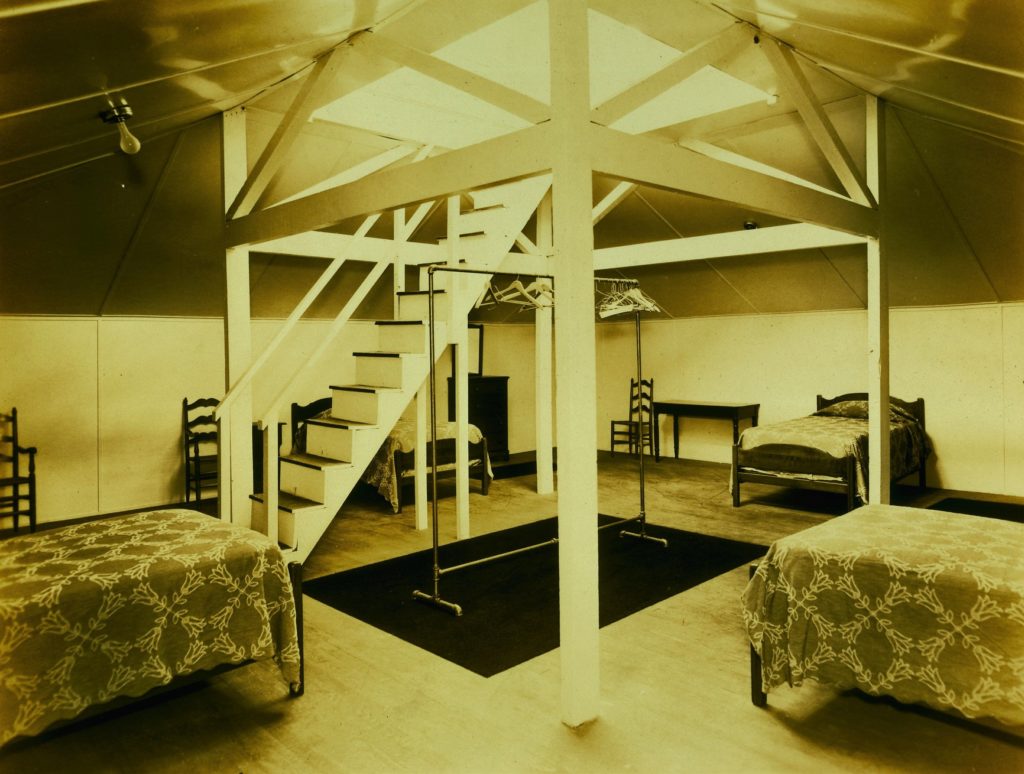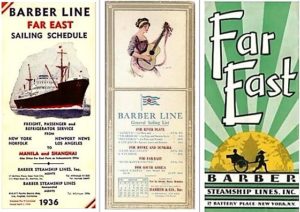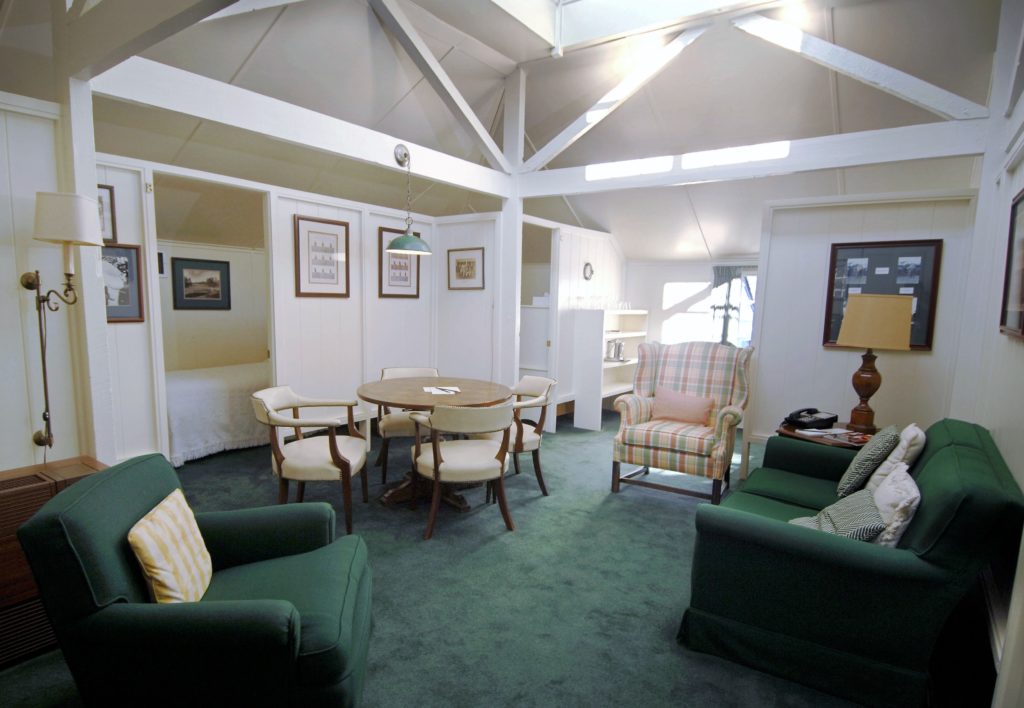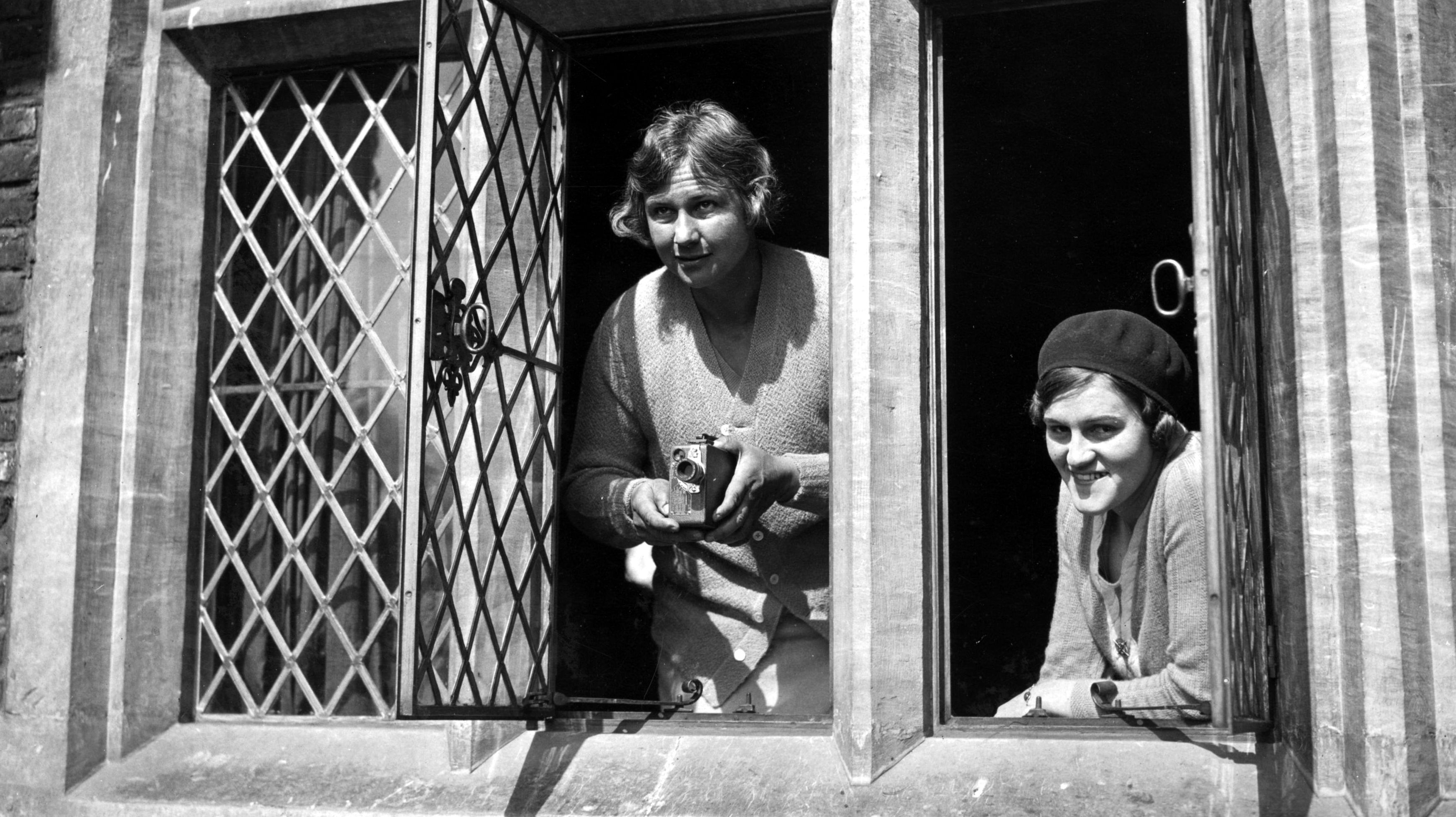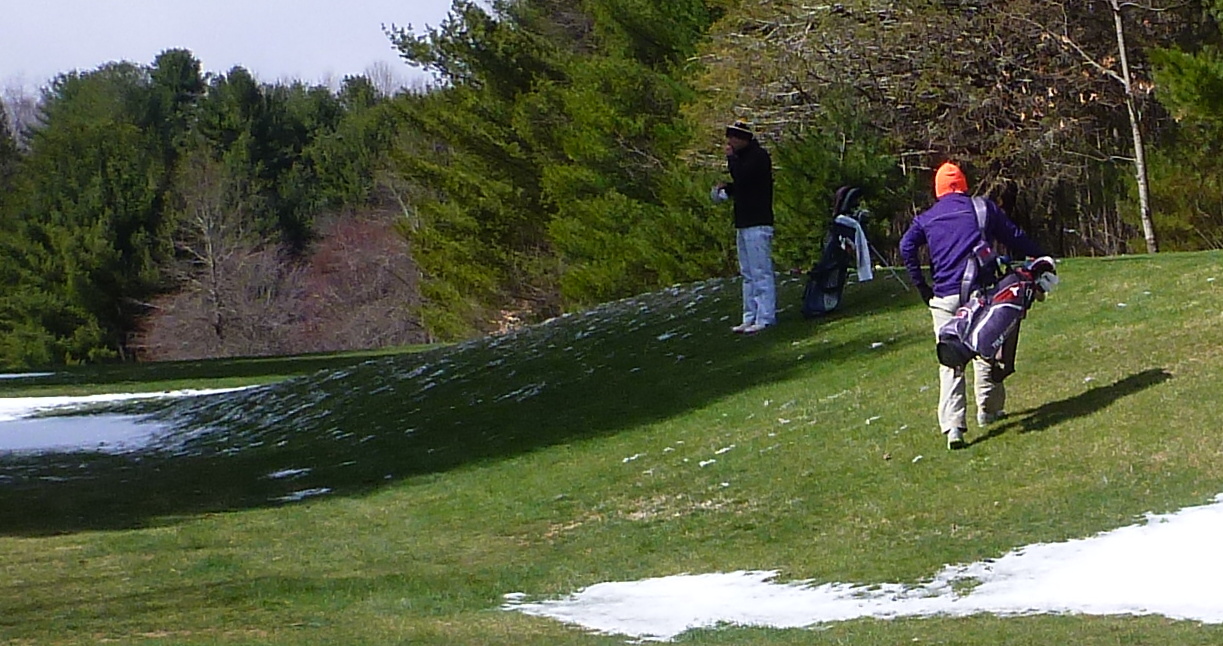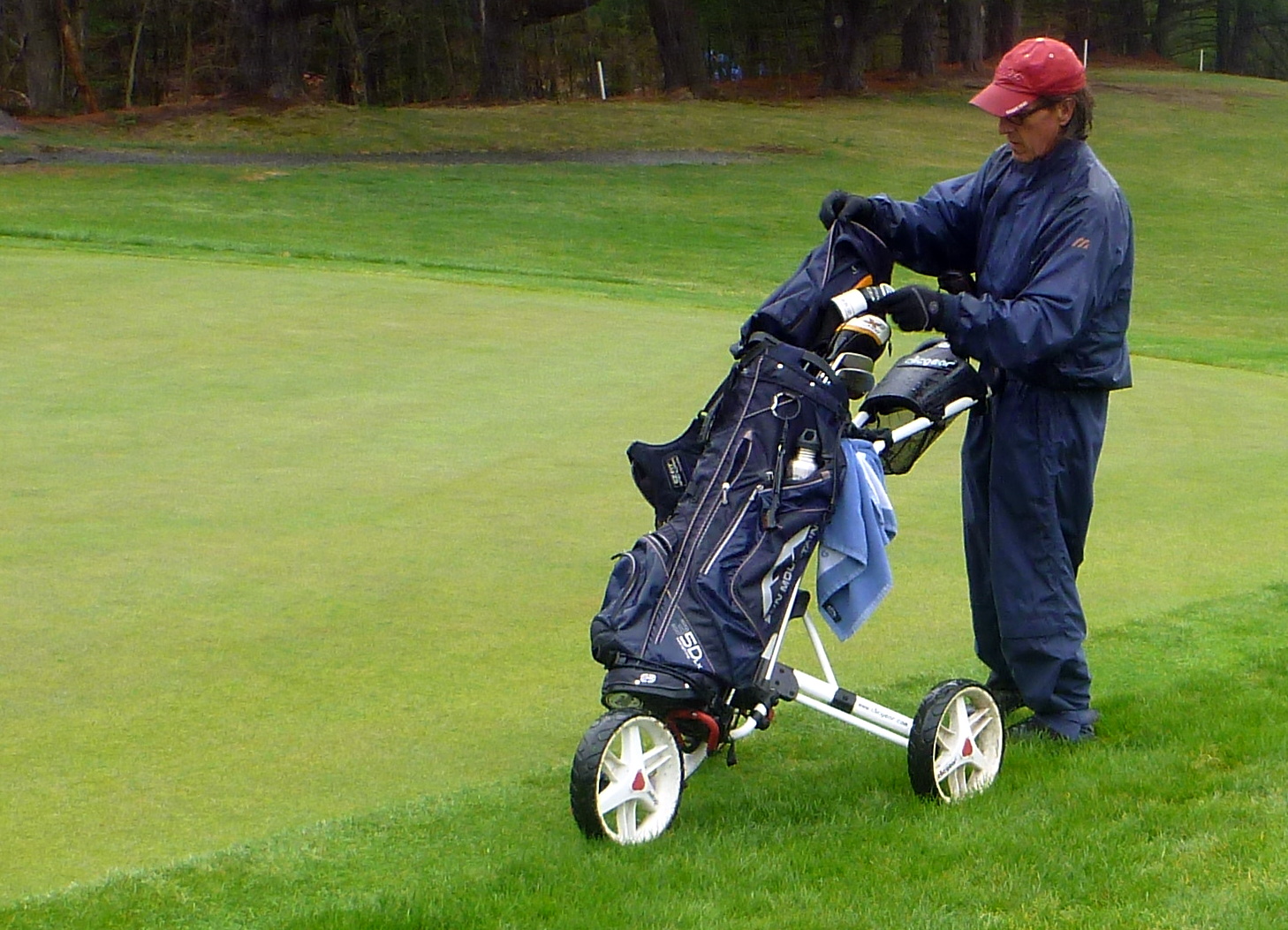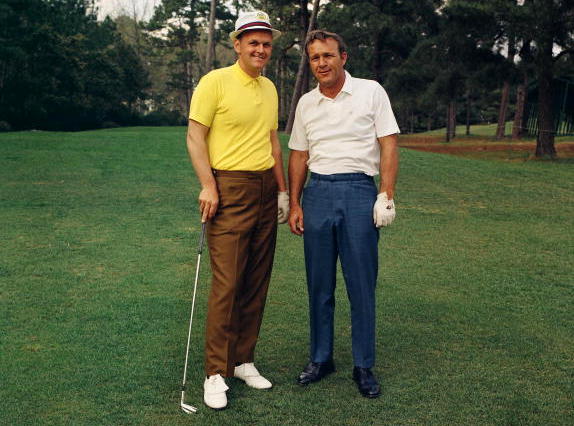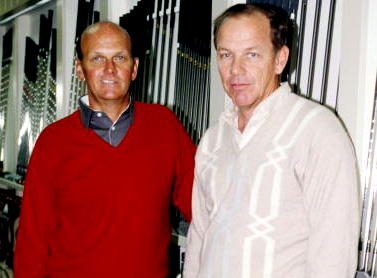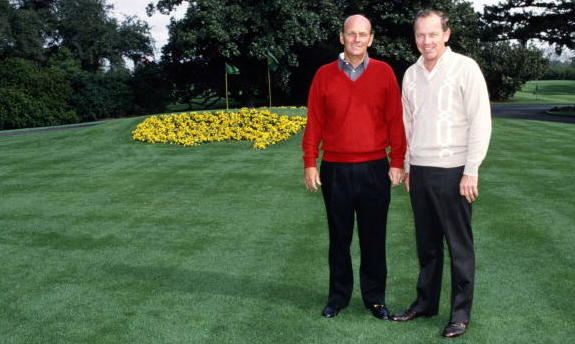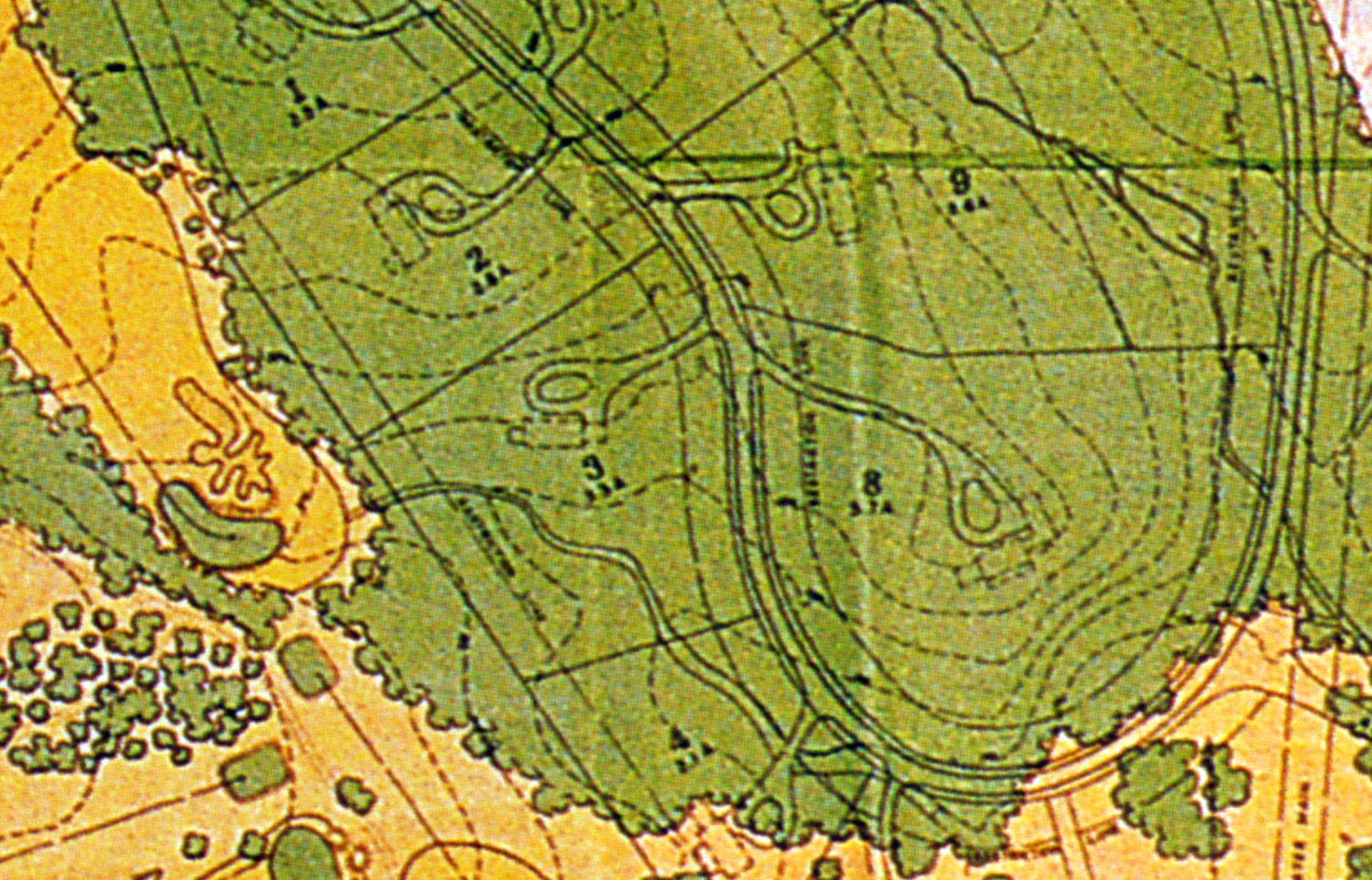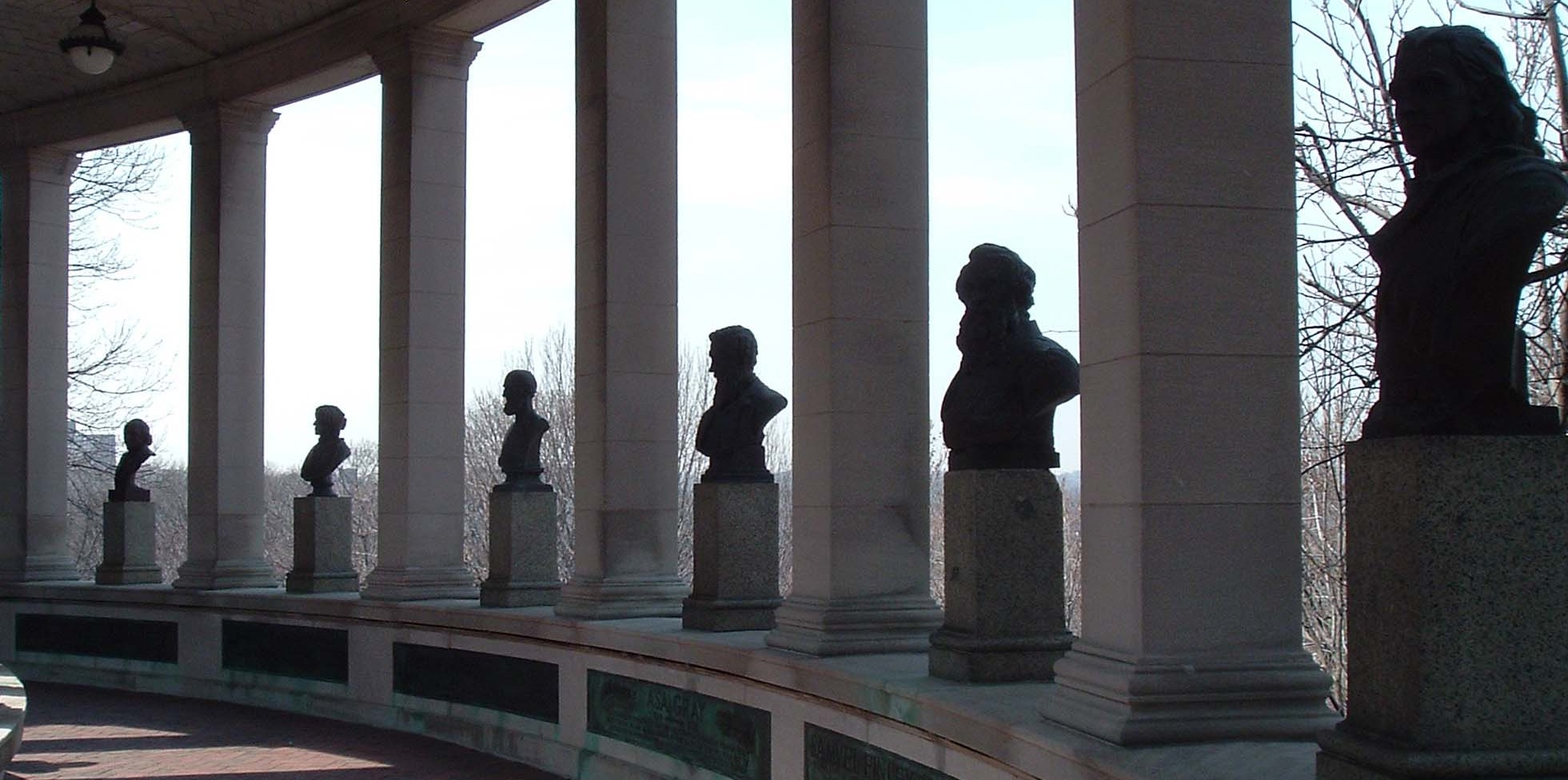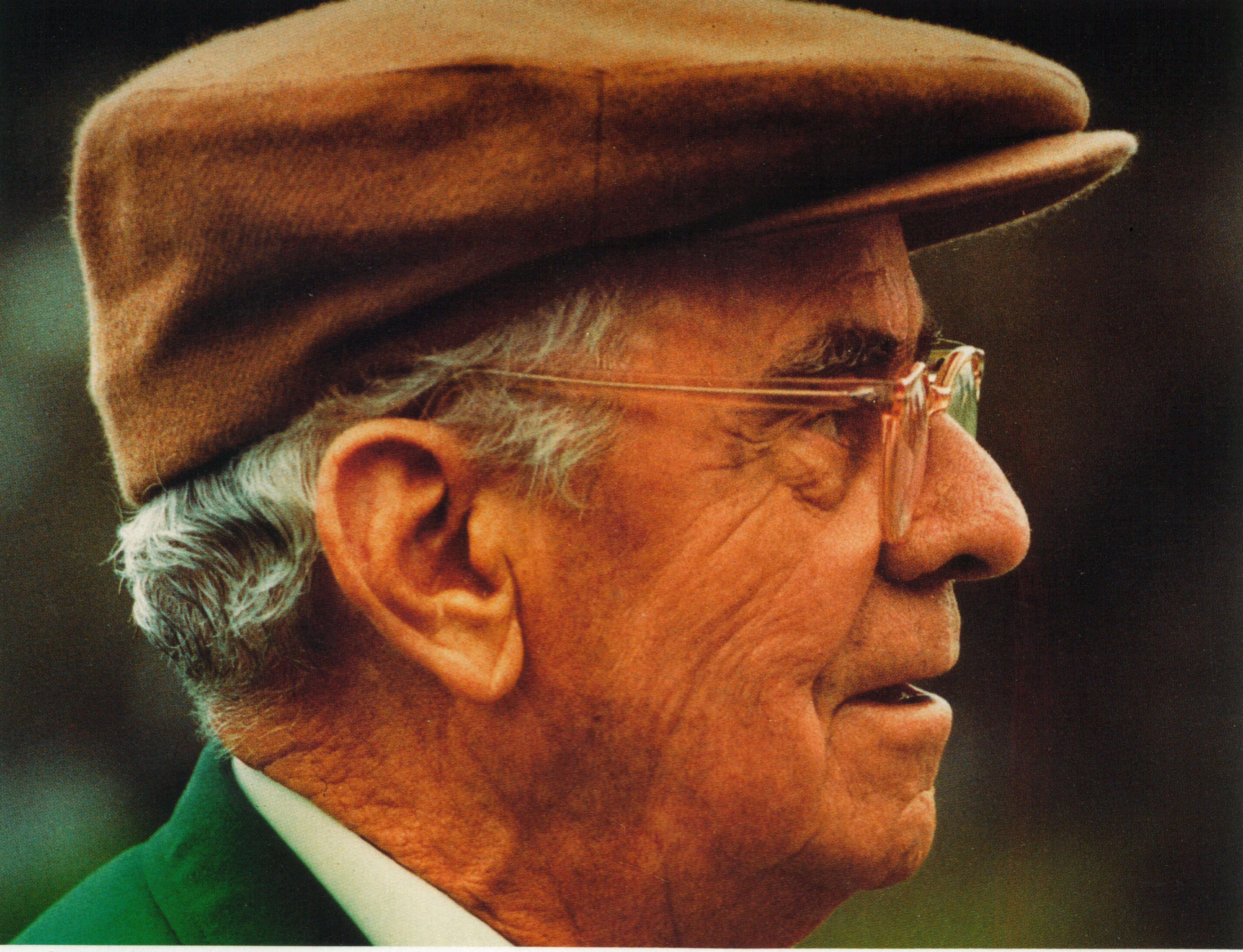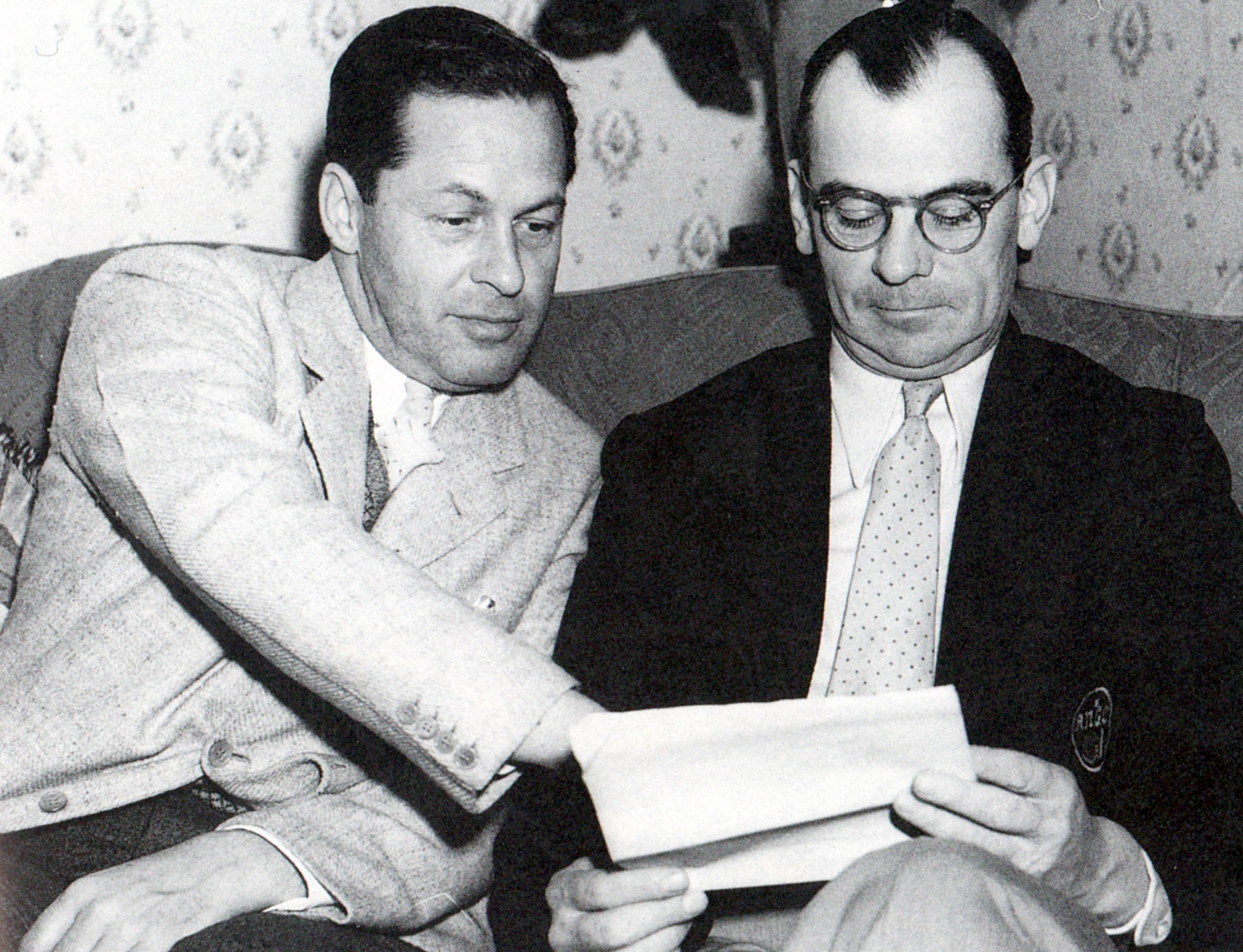
Charles, Clifford, Alpheus, Dorothy, Key, John, and Rebecca Roberts in 1907, when Clifford was thirteen.
Clifford Roberts was the co-founder, with Bobby Jones, of Augusta National Golf Club, and he was the chairman of both the club and the Masters from their beginning, in the early 1930s, until his death, in 1977. It’s often said that Jones conceived of the club and Roberts financed it, but that’s not the case. Roberts, unlike Jones, grew up poor, and during the club’s early years he was close to broke. But Roberts idolized Jones, and he was determined to help him fulfill his dream of building a golf course in the South that could host a U. S. Open. That the club and the Masters survived the Great Depression and the Second World War is a tribute mainly to Roberts’s determination to keep them going. Time, as Roberts measured it, began the day he met Bobby Jones. But the years leading up to that encounter are in many ways as interesting as the years that followed it. They are the years that shaped the man who shaped Augusta National and the Masters.
Herbert Warren Wind wrote in Sports Illustrated and The New Yorker that Clifford Roberts was born in Chicago. (He wasn’t.) Ross Goodner wrote in Golf World that his real name was Charles D. Clifford Roberts. (Not true, although Goodner was close.) Frank Christian—a photographer and the co-author, with Cal Brown, of Augusta National & The Masters—wrote that Roberts as a child spent time in an orphanage. (He never did.) Charles Price, in A Golf Story, wrote that Roberts graduated from high school. (He didn’t finish ninth grade.) Curt Sampson, in The Masters, wrote that Roberts made $50,000 in 1923 and used the money to buy a one-sixth partnership in an investment firm called the Reynolds Company. (Roberts made $2,441.63 in 1923; Reynolds & Co.—the correct name—didn’t exist until 1931; Roberts went to work there in the mid-thirties; he became the firm’s ninth general partner on May 1, 1941.)
All these errors, and many others, are understandable. Roberts was stingy with biographical detail, and he almost never talked about his early years, even among friends. Jack Stephens, who was the club’s chairman between 1991 and 1998 and was close to Roberts during the last fifteen years of his life, told me, “I just figured Cliff had never been a child.”
Charles DeClifford Roberts, Jr., was born on March 6, 1894, on his mother’s parents’ farm near Morning Sun, a tiny town in southeastern Iowa (current population: 836). He was known as Clifford from the beginning. For his first Christmas, he received “a toy chicken and a half interest in blocks and a monkey riding a goat mounted on wheels,” his mother recorded in her diary. (The other co-owner of the blocks was his brother John, who was sixteen months older.) He was a good eater. For Christmas dinner he had pudding, popovers, grapes, cranberries, baked oysters, and squirrel.
Clifford was the second of five children. His mother, Rebecca Key Roberts, was twenty-five years old and pleasantly attractive. She had a cameo the size of a hen’s egg which she wore at her throat. She was proud of her long brown hair, her clothes, and her skills as a baker. She owned a revolver, and she once fired it at a stray dog—“only scared it”—though she later traded the gun to an acquaintance. She had false teeth. She enjoyed the antics and enthusiasms of her children, and when Clifford, at the age of nine, became captivated by marbles, she sewed extra pockets in his pants so that he could carry more of them around. She was fond of ice cream. Her first diary petered out in 1898, but she started another in 1900—after giving birth to twins, named Robert Key and Dorothy—and kept it faithfully until 1911. “A Katydid jumped on Alpheus’s dress,” she wrote in 1905, when Alpheus, her fourth son and youngest child, was two. “He was so scared & called it a ‘gog.’” The diary makes fascinating reading, especially if you know that in 1913, when Clifford was nineteen and Alpheus was nine, she committed suicide.
1902 Read nearly all day—very blue and discouraged. . . . I left John & Clifford to keep house while I went up town in evening. There had been a fight and shooting on the street. . . . Boys distributed some Rip Van Winkle show bills and so each got a free pass. . . . Tramp here for dinner. . . . Boy here selling needles to keep from begging. . . . Still it rains. Things floating in our cellar. . . . Boys have carpenter fever—new nails and nail apron and making twins a play house. . . . Boys cared for twins, cooked and swept and washed dishes—all in their boyish way. . . . Gone all day & sold only 1 bushel of apples. Brought new milk strainer, shoe polish, steel pens & school sponges. Clifford churned.
Rebecca was a sharp observer and had a sense of humor, and although her entries are telegraphic—“Twins fat and well. Hope they may not be kidnapped as Cudahys was”—they vividly describe what seems to have been a happy life for her children and a troubled life for her. The family had many joyful moments (“Husband & I read late & Clifford & Key ‘had a spell’—they could not quit laughing & playing pranks until the lights were all out. Such merry times at our house”).
But the underlying themes are of dislocation and despair. “I am very miserable—life almost a burden,” she wrote in 1908, in a typical entry. Her husband was often absent, and he moved the family constantly. Rebecca had numerous ailments, among them severe headaches, back pain, “curvature of the spine,” a miscarriage followed by months of hemorrhaging, pleurisy, “nervous chills,” and a persistent melancholy that a modern reader does not hesitate to diagnose as depression. Winter was the hardest, and she often felt overwhelmed by her children. “I am hardly able to be out of bed,” she wrote in 1904, “but must keep going to care for my numerous family.” She took patent medicines—many of which would have contained narcotics along with a great deal of alcohol. (The most popular children’s cough medicine of the period, Mrs. Winslow’s Soothing Syrup, was based on morphine. One night, Rebecca used one of her own medicines to quiet baby Alpheus, who was colicky and had been crying.)
She pursued electrical baths, osteopathy treatments, homeopathy treatments, hot water cures, and other fad therapies administered by a variety of practitioners. On many mornings, she was unable to get out of bed. At such times, she often left the housework and the care of the younger children to Clifford and John, beginning when Clifford was six and John was seven. The boys shouldered the burden cheerfully and with ingenuity. One day when Clifford was ten and his mother and John were late in returning by train from a visit to a doctor in another town, Clifford dressed Dorothy, who was three, in a new red dress, “made her new garters when he could not find her suspenders,” and took her with him to a party to which he had been invited. Rebecca was proud of her children for rising to the occasion, but she was unromantic about child-rearing, and she hired housekeeping help when she could afford it. “Ida Kellogg came to work,” she wrote in 1907, “— measles still showing, has whooping cough & only 10 years old—but willing.”
Ill health was taken for granted. Clifford’s father had gastrointestinal trouble, a rupture, and “heart failure palpitation.” John, with whom Clifford shared a bed, stammered and suffered seizures that various doctors diagnosed as St. Vitus’s dance, “worm spasms”—for which he was treated with “vermifuge tonic”—and (correctly) grand mal epilepsy. Clifford had trouble with his eyes, suffered from “malaria & biliousness,” and endured devastating bouts with poison ivy. Days when everyone was well were rare enough to be noted in the diary. Clifford knew children who died of pneumonia, scarlet fever, small pox, “brain fever,” tonsillitis, typhoid, and tuberculosis. “Boys sent Chinese lilies,” Rebecca noted in 1902, when a seven-year-old classmate of Clifford’s was buried.
Charles DeClifford Roberts, Sr., was a restless small-time entrepreneur who tried his hand and failed at a broad variety of undertakings. “My father always was interested in seeing what was on the other side of the next hill,” Clifford said with understatement many years later. Charles was apt on a whim to trade the family store for a farm in another state—then, after harvesting a single crop of wheat and oats, to trade the farm for a business somewhere else, and then to sell that business and invest the proceeds in another. He bought and sold everything from candles and thread to farm equipment and fur coats. He speculated in real estate and arranged the sale of other people’s property. He once owned two fish-and-oyster houses in Texas. He bought bankrupt businesses and liquidated their stock. He sued hucksters who had cheated him. In 1906, in Oklahoma, he received a large rail shipment consisting of flour and shoes.
The hectic pace of Charles’s wheeling and dealing suggests compulsion as much as enterprise. Few of his deals greatly improved the family’s standard of living, which rose and fell within a narrow band at the lower limits of the respectable. Almost invariably, his first step after acquiring a new store or piece of property was to attempt to trade it for something else. Rebecca—who was never consulted—lamented most of these transactions. As soon as she had decorated a house to her satisfaction, it seemed, he put it up for sale. Charles’s quixotic dealings didn’t bring him happiness, either. He suffered from insomnia and sometimes paced the floor, terrified that his world was coming apart. He died in San Benito, Texas, in 1921, after being struck by a train, and his death may have been a suicide. At the time, he was suffering the effects of a stroke, his second marriage was under considerable stress, and he was supporting himself and what remained of his family with the help of regular checks from Clifford, who was struggling to make his own way in New York.
Charles and Rebecca’s marriage was not desolate. They were often happy together when he was at home. He was loving with the children, gave expensive presents when business was good, wrote poetry in the evenings, and took Rebecca’s illnesses seriously. But he worked long hours and traveled for weeks at a stretch. When the twins were young he had to be reintroduced to them upon returning. (On one occasion, they recognized him only after he had sung a song they knew; on another, they wouldn’t let him hold them until after they had watched him eat breakfast.) He wrote home irregularly. He moved the family so often and on such short notice that a reader must study the diary carefully to detect when the locale has changed. The constant shifting took a heavy toll. At one point, Rebecca wrote, “I can hardly bear to think of the tremendous task of moving—hardly able to live—even quietly.” Other entries have a sardonic edge: “Charles’s Texas fever is all gone & he is now confident that New Mexico will just suit us.” In later years, Clifford often described his background simply as “Midwestern.” In a letter to Eisenhower, in 1967, he wrote that he envied Ike’s ability to remember “boyhood escapades,” as evidenced by a recent article in the Saturday Evening Post. Much of his own childhood seemed to him a blur, or a blank.
[to be continued]
